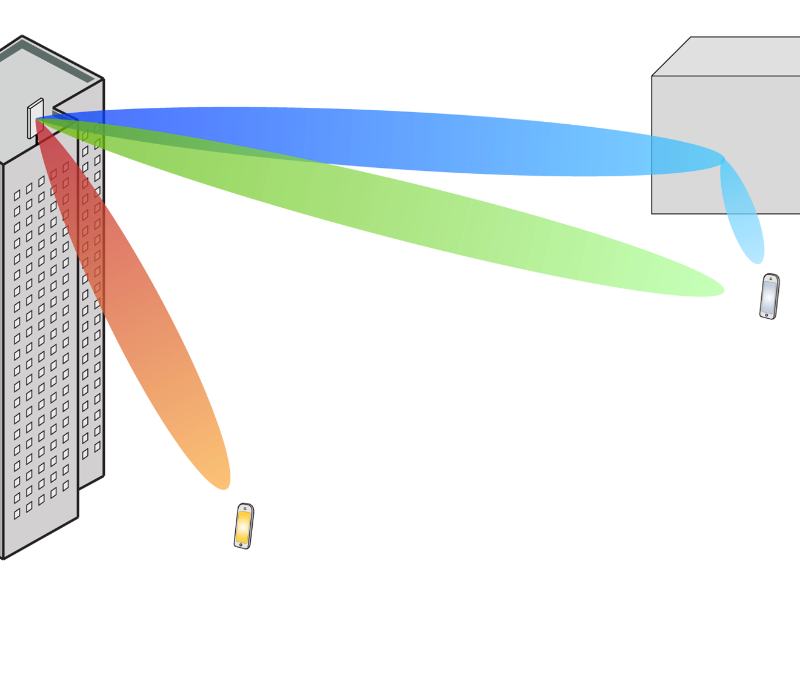9 föreläsningar, varje bestående av cirka 45 min videor att se i förväg och 90 min med exempel och diskussioner i klassrum.
6 läxuppsättningar med cirka 5 övningar vardera. Skriftliga lösningar lämnas in och lösningarna diskuteras i ett seminarium.
2 labbövningar som var och en förväntas ta cirka 5 timmar att lösa.
Fundamentala begränsningar: Kanalkapacitetens beteende när effekt eller bandbredd ökas. Exempel på praktiska system som är effekt- och bandbreddsbegränsade. Ortogonal och icke-ortogonal kommunikation i scenarier med flera användare.
Grundläggande flerantennkanaler: Signalförstärkning med flera antenner, kanalkapacitet för kanaler med flera antenner på ena sidan. Modeller för flerantenn-kanaler.
Fädande kanaler: Rayleigh-fädande kanaler, outage-kapacitet, diversitet, kanalkoherens, ergodisk kapacitet. Punkt-till-punkt-MIMO: Kapacitet för kanaler med flera antenner på båda sidorna, multiplexing-vinster, spatiella frihetsgrader.
Upplänk för fleranvändar-MIMO: Upplänkskapacitet, icke-linjär och linjär detektion, kanalestimering, kapacitetsbegränsningar i system med många antenner.
Nedlänk för fleranvändar-MIMO: Linjär förkodning, kapacitetsbegränsningar i system med många antenner, skillnader och likheter mellan upplänk och nedlänk.
Effektreglering: Region för uppnåeliga datatakter, typiska arbetspunkter, grundläggande problemställningar för effektreglering.
Cellulära nätverk: Ingenjörsmässiga aspekter vid användning av flerantenn-tekniker i cellulära nätverk, såsom strategier för resursåteranvändning, pilotkontaminering och hanterande av störningar.
Efter genomgången kurs skall studenten:
- kunna beskriva, applicera och analysera de fundamentala begränsningarna när det trådlösa mediet används för kommunikation, särskilt gällande samspelet mellan kanalkapacitet, kanalkoherens, spatiella frihetsgrader, sändeffekt, pilotkontaminering och bandbredd.
- ha förmåga att applicera ett flertal olika metoder inom flerantennateknik för att uppnå hög kapacitet i punkt-till-punkt kommunikation och fleranvändar-kommunikation, samt förmåga att utvärdera och tolka resultaten.
- med hög säkerhet kunna formulera och lösa ingenjörsmässiga problemställningar kring den uppnåeliga prestandan och begränsningarna hos flerantennkommunikation.
- ha förmåga att använda effektreglering och andra resurshanteringsparametrar för att designa kommunikationssystem som uppfyller givna prestandakrav kring spektraleffektivitet och energieffektivitet.
- kunna implementera, validera och jämföra de huvudsakliga teoretiska koncepten för flerantenn-kommunikation genom datorsimuleringar.
